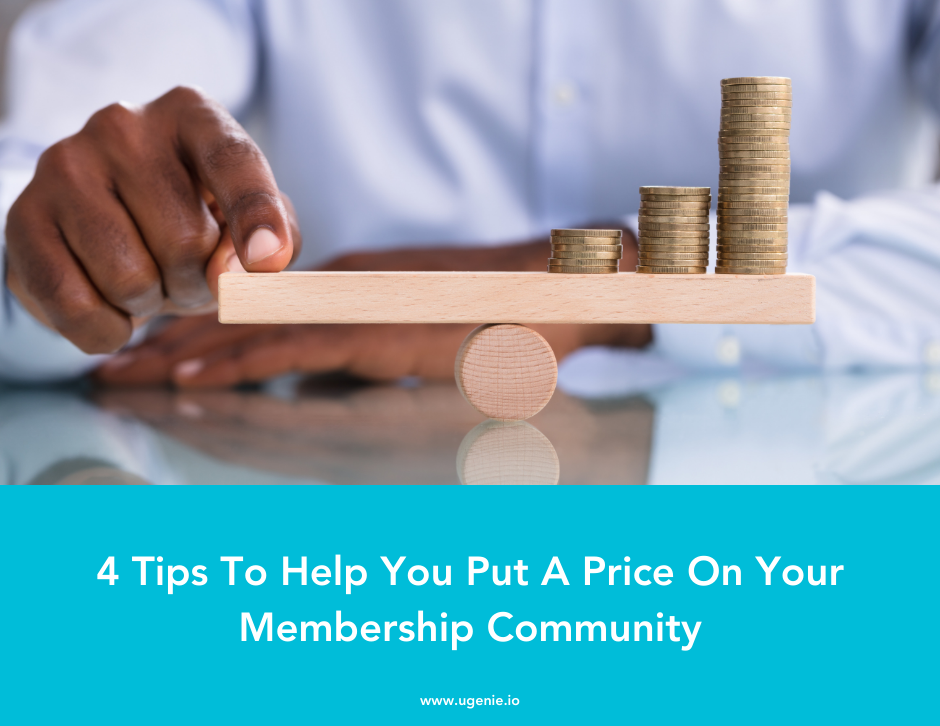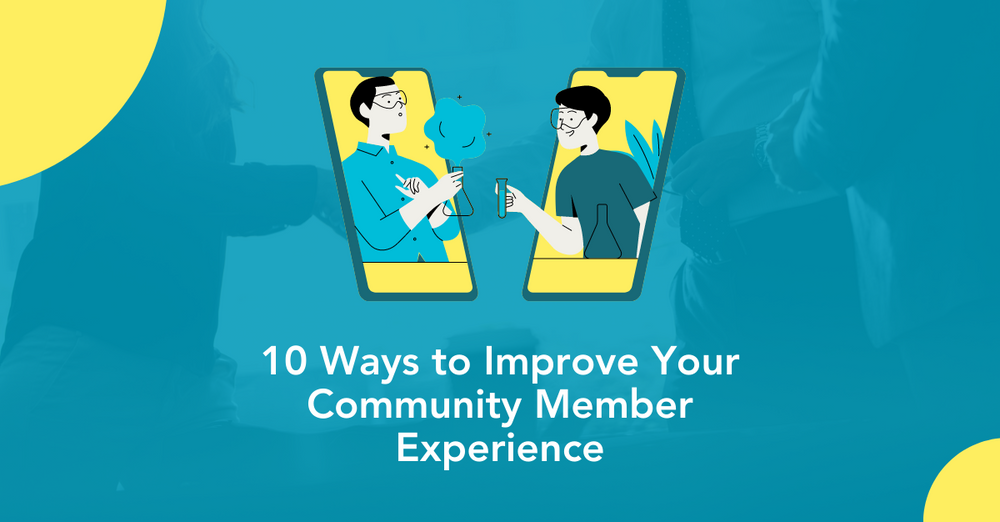5 Steps to Build an Online Community in 2023
In the ever-evolving digital landscape, online communities have become an important part of our social lives. If you use any form of social media then there’s a strong chance you’re part of an online community, too.
Whether it’s a Facebook Group for your local area or a Discord channel dedicated to your favourite computer game, online communities are everywhere, and they’re woven into the fabric of our daily lives – every day we connect with other people, indulge in our shared interests, network and so much more.
But every now and then we run into a community that doesn’t quite meet our expectations, or even worse, a community that doesn’t exist! When you encounter situations like that, maybe it’s time to build your own online community.
Perhaps it’s for an underserved area in your life – such as a hobby or an interest – or maybe you run a business and you want to support your customers by giving them an online community space. Whatever your reason for building an online community, you’re in the right place.
First, let’s take a look at what an online community actually is before we dig into the steps you need to take if you want to build an online community of your very own.
What is an online community?
In simple terms, an online community is a group of like-minded individuals who come together on the internet to connect over a common interest. Unlike the usual face-to-face communities, an online community goes beyond a fixed location, enabling people from all over the world to share, communicate and collaborate.
An online community can come in many forms, but the most obvious, and the one that many of us have been a part of, is a group on social networks like Facebook. Communities can take other shapes, too. In the early days of the internet, for example, we had forums and discussion boards. Nowadays, they’ve evolved into platforms like Reddit and Discord. There are also communities like WhatsApp or Telegram groups, custom-built community platforms, and Slack communities.
In theory, the goal of any online community is to foster an environment that encourages communication and knowledge sharing, where users can talk about their interests with others. In practice, however, this isn’t always the case. Unfortunately, there are plenty of “bad actors” looking to cause upset in unmoderated online communities. But for the most part, you can jump into a community, get what you need and stay a while.
The characteristics that define an online community
So what really makes an online community? Well, the best online communities all share some similar characteristics. To start with, online community members are usually united by a common purpose. That could be a hobby, interest, cause, or lifestyle. Their shared purpose is the foundation for building meaningful connections within that online community.
Another characteristic of an online community is that they thrive on open and transparent communication. Group members are encouraged to actively express their thoughts, ask questions, and offer insights.
This creates a culture of inclusivity and collaboration, and so for an online community to be considered successful, it should always nurture a supportive atmosphere where members feel comfortable sharing or participating in discussions.
Yet another key characteristic of an online community, and perhaps one of the biggest benefits, is the opportunity to exchange ideas and knowledge. This is especially true in professional networking circles, where members are able to tap into a rich vein of collective wisdom to gain insights and learn from the experience of others.
We’ve previously discussed the challenge of unmoderated communities, so it’s worth pointing out that another distinctive feature of online communities is a focus on moderation. Some of the better online communities often have moderators or administrators.
These people effectively maintain order and enforce community guidelines. But these aren’t rules just for the sake of it, they ensure discussions remain constructive and respectful so everyone has an opportunity to get involved.
One thing that marks out an online community is that, often, successful communities evolve over time, adapting to the changing needs and interests of their members. They embrace feedback and continuously improve to remain relevant and engaging, rather than remain the same for long periods of time.
Why should you build an online community?
So now we know what an online community is, and some of the recognisable features of an online community, you might be wondering why you should build one for yourself.
Whether your aim is to connect with fellow hobbyists, build a professional network, or advocate for a cause close to your heart, we must first ask the question “why?”.
The business case for an online community
The business case is easy enough to understand. In 2023, building an online community platform is a strategic imperative for organisations that want to increase customer engagement, strengthen brand loyalty, and drive true, meaningful interactions. Also, research shows that having a branded online community provides greater trust among a brand’s audience.
There are other compelling reasons for building an online community, and one particular stand out is the fact that you can significantly enhance engagement with your business. This is often cited as one of the primary reasons for starting an online community, and the stats show that. One report highlights that customer engagement can be boosted by as much as 21%, and 66% of online community managers say that it positively impacts customer retention.
Extend your reach and boost brand loyalty
Another reason why building an online community is good for your brand is that, unlike traditional communities held back by one geographical location, online community platforms give people from all over the world a chance to connect, share, and exchange. This gives businesses an opportunity to reach a wider membership base.
In addition to enhanced engagement and expanded reach, an online community platform is an effective tool to build and strengthen a loyal customer base. Using all the features and tools available through online community platforms helps businesses engage with members by using valuable, personalised content and personalised support. This fosters a true sense of loyalty, leading to long-term brand advocacy.
Here are some other reasons why you should build an online community:
- Customer and member insights
- Support and knowledge sharing
- User-generated content
- Enhanced customer support
- Networking opportunities
- Data-driven decision-making
So now we’ve seen a handful of compelling reasons why building an online community is great for your organisation, let’s go through the 5 simple, actionable steps you’ll need to take if you want to launch your own.
5 Steps to Build an Online Community
Building an online community requires thoughtful planning, strategic decision-making, and consistent input. It’s not as simple as “build it and they will come” – your online community needs to be continually managed.
Starting out, it can seem like the best thing to do is give your members or customers a place to communicate, but this couldn’t be further from the truth. Follow these five essential steps to create, nurture, and grow an online community:
- Define your purpose
- Choose an online community platform
- Set up your online community
- Keep your community engaged
- Grow your online community
Step 1: Define your purpose
Begin by clearly defining the purpose and objectives of your online community. Ask yourself (or even better, your customers or members) what interests, passions, or goals will bring them together. When you understand the unique value proposition of your community, you will find it much easier to attract like-minded people.
This step will lay a solid foundation for a meaningful, impactful community. Whatever it might be, a well-defined purpose will shape your online community's identity and guide its growth in the long term, while at the same time attracting new members.
Step 2: Choose an Online Community Platform
Selecting the right online community platform is another incredibly important step. Choose the wrong online community platform and you’ll find it hard to attract people. The goal here is to create an enjoyable user experience, so look for a community platform that has features and functionalities that align with your community's needs and your business or personal goals.
While you can build communities on social media platforms, they have many downsides, so it’s a good idea to explore all the custom-made community platforms. Look for things like ease of use, customisation options, and privacy/moderation tools to ensure the platform is exactly what you had in mind.
Step 3: Set Up Your Online Community
Once you have chosen a platform, it's time to set up your online community. Start by creating a compelling and inviting space that communicates your online community's purpose. The best membership platforms allow you to customise the branding and design to reflect the community's identity.
It’s also important at this stage to establish clear guidelines and community rules, so you can maintain a positive and respectful environment for your members straight off the bat. Encourage members to get involved by inviting people who align with your community's purpose, and seed initial content to get discussions underway.
Step 4: Keep Your Community Engaged
Sustained engagement is the secret to success. Sure, you can have a shiny online community platform full of people, but if they’re not using it, or they’re not engaging with your content or discussions, then it’s all for nought. Make sure you regularly post relevant content, as this will stimulate discussions. New members are more likely to hang around for longer if they see that the community is active.
Encourage your community members to actively participate and use multimedia content to your advantage, such as videos, images or live streams. This adds some much-needed variety to your members' day-to-day interactions within your community. Virtual events, webinars, and Q&A sessions are also great ways to keep your community engaged.
Step 5: Grow Your Online Community
So, you’ve laid the foundations, established your purpose, and selected an online platform. Your members are engaging with your community and things are going swimmingly…what next? The answer is growth!
As your community starts to gain traction, it’s a good idea to shift your focus to your growth strategy. You can expand your reach through social media and other online platforms to promote your community or encourage existing members to invite friends and colleagues who might be interested in the community's purpose. Collaboration and cross-promotion is a great way to expand your reach and grow.
At this point, it might be worthwhile to dig into the numbers. As we mentioned earlier, the best online community platforms have the ways and means to draw important insights from data. These will help you identify trends, understand member behaviour, and refine your strategies for continuous improvement.
Build your own online community platform
Due to the fact that online communities are so commonplace, you’d think that it’d be hard to stand out, right? Wrong! Just because they’re so prevalent, doesn’t mean they give their members exactly what they want or need from an online community.
While building an online community is not necessarily easy, it is achievable with careful planning, dedication, and the right approach. Online community platforms like Ugenie have made the process more accessible than ever before, giving you the tools to successfully create and grow your own online community.
Sure, building an online community can be challenging, but the rewards can be substantial. Whether it’s increased brand loyalty, valuable customer insights, networking opportunities, or a sense of fulfilment from connecting like-minded individuals, getting started has never been easier.
If you’re ready to take the next step, book a demo today.
Share this
You May Also Like
These Related Stories

Rethink Facebook Marketing. Organic Reach Is Declining | Ugenie | Community Tips

4 Tips To Help You Put A Price On Your Membership Community

